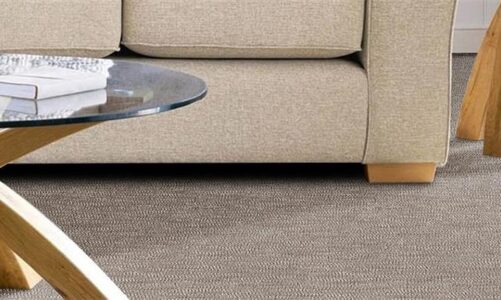Key Takeaways:
- Tea cups and saucers enhance the art of tea drinking beyond practicality
- Tea cups and saucers originated in ancient China and evolved over time
- Tea cups are made of various materials including porcelain, bone china, and handcrafted options
- The shape, size, patterns, and colors of a tea cup contribute to its uniqueness and experience
- Consider personal preferences, tea type, and care when choosing a tea cup and saucer set
- The Beauty of Tea Cups and Saucers
When it comes to enjoying a cup of tea, the vessel from which you sip can truly elevate the experience. Tea cups and saucers have long been recognized for their beauty and elegance, enhancing the art of tea drinking in ways beyond just practicality. From their historic origins to their intricate designs, tea cups and saucers have captured our attention and become an integral part of tea-drinking traditions worldwide.
1 The Origins of Tea Cups and Saucers
The origins of tea cups and saucers can be traced back to ancient China, where tea drinking has been a cherished practice for over 2,000 years. In the Tang Dynasty (618-907 AD), tea was consumed from small bowls without handles. However, during the Song Dynasty (960-1279 AD), tea bowls began to evolve into the cup-like vessels we recognize today.
It was during the Ming Dynasty (1368-1644 AD) that tea cups and saucers as separate entities started to emerge. The saucer served a practical purpose, providing a place to rest the hot cup and catch any drips. Tea cups during this period were often made of porcelain and featured delicate hand-painted designs.
2 The Evolution of Tea Cup Designs
Over the centuries, tea cup designs have evolved to reflect the changing tastes and aesthetics of different cultures. In Europe, for example, tea cups took on a more ornate and elaborate style during the 18th century as tea became a fashionable beverage among the upper class.
In Japan, tea cups known as chawan have been an essential part of traditional tea ceremonies for centuries. These cups are often larger and deeper, allowing for whisking matcha tea to create a frothy consistency.
3 The Connection between Tea Cups and Cultural Traditions
Tea cups and saucers have become deeply intertwined with cultural traditions around the world. In England, the afternoon tea ritual is incomplete without delicate bone china cups and saucers. In Morocco, the small tea glasses used for serving mint tea are an iconic symbol of hospitality and socializing.
The choice of tea cup and saucer can also reflect personal preferences and individual taste. Some may prefer the simplicity and elegance of a white porcelain cup, while others may seek out bold and colorful designs that capture their personality and style.
- Exploring Tea Cup Styles and Materials
Tea cups come in a variety of styles, each with its own unique charm and appeal. The choice of material can greatly affect the tea-drinking experience, from the way the cup feels in your hand to the way it enhances the flavors of the tea itself.
1 Porcelain Perfection: Classic Tea Cups
Porcelain tea cups are a timeless choice, known for their delicate beauty and excellent heat retention. The fine texture of porcelain allows for intricate designs and patterns to be painted on the surface. Porcelain cups are often favored for their ability to showcase the color and clarity of the tea, providing a visually pleasing experience.
These cups are also known for their thin walls, which help to maintain the temperature of the tea for longer. The smooth surface of porcelain makes it easy to clean, ensuring that the flavors of different teas don’t mix and allowing for a pure taste with each brew.
2 The Elegance of Bone China Tea Cups
Bone china tea cups are revered for their delicate beauty and unique translucency. This fine and lightweight material is made by adding bone ash to the ceramic mixture. The result is a durable yet elegant cup that is resistant to chipping.
One of the distinguishing features of bone china cups is their warm and creamy appearance. They often have a thin rim, allowing the tea to flow smoothly onto the tongue. Bone china also offers excellent heat retention, keeping your tea at the perfect temperature for longer periods of time.
3 Uniquely Handcrafted Tea Cups
If you’re looking for a tea cup with character and individuality, consider handcrafted options. Artisans around the world create unique tea cups using a variety of techniques, such as pottery, glassblowing, and woodturning.
Handcrafted tea cups can have a rustic and organic feel, showcasing the natural beauty of the materials used. These cups often have a tactile quality, with textured surfaces that add an extra dimension to the tea-drinking experience.
- What Makes a Tea Cup Truly Exquisite
While beauty is subjective, there are several factors that contribute to making a tea cup truly exquisite. From the shape and size to the patterns and colors, each element plays a role in enhancing the visual and sensory pleasure of drinking tea.
1 The Importance of Shape and Size
The shape and size of a tea cup can significantly impact the overall experience. Tea cups with a wide opening, for example, allow the aroma of the tea to fully develop, enhancing the sensory experience. Cups with a narrower opening can help trap the aroma, intensifying the fragrance.
The size of the cup also affects the way we perceive the tea. Smaller cups allow for more concentrated sips, while larger cups can promote a leisurely and indulgent tea-drinking experience.
2 Intricate Patterns and Designs
Tea cups adorned with intricate patterns and designs add a touch of artistry to the tea-drinking experience. From delicate flowers to geometric shapes, these patterns can reflect cultural traditions, personal preferences, or simply serve as a visual feast for the eyes.
The choice of pattern can also influence the perception of the tea’s flavor. For example, a cup with a floral pattern might evoke a sense of lightness and freshness, while a cup with a bold and geometric design might lend a sense of strength and intensity to the brew.
3 The Role of Color and Texture
The color and texture of a tea cup can create a multidimensional experience for both the eyes and the fingertips. Vibrant colors, such as a deep cobalt blue or a rich emerald green, can evoke different moods and emotions.
Textures, such as a smooth glaze or a textured surface, add depth and tactile pleasure to the tea-drinking experience. The surface of the cup can affect how the tea feels on the tongue, amplifying or softening the flavors.
- Finding the Perfect Tea Cup and Saucer Set
With so many options available, finding the perfect tea cup and saucer set can be an exciting journey. Whether you’re a seasoned tea lover or just starting to explore the world of tea, there are a few key considerations to keep in mind.
1 Shopping Tips for Tea Lovers
When shopping for tea cups and saucers, it’s important to consider your personal preferences and taste. Think about the type of tea you most frequently enjoy and how the cup’s material, shape, and size can enhance the flavors.
Pay attention to the craftsmanship and quality of the set. Look for well-made pieces with attention to detail and sturdy construction. Consider the weight and balance of the cup in your hand, as these factors can greatly impact your overall tea-drinking experience.
2 Teaware for Different Tea Varieties
Different teas require different brewing methods and, therefore, different teaware. For delicate green teas, opt for smaller, porcelain cups that allow for shorter steeping times and lower water temperatures. For robust black teas, larger cups with thicker walls can help maintain a higher temperature.
If you enjoy herbal teas or tisanes, consider cups with wider openings to fully appreciate the aromatic qualities of the brewed herbs.
3 Care and Maintenance of Tea Cups and Saucers
To ensure your tea cups and saucers stay beautiful and functional for years to come, proper care and maintenance are essential. Hand wash your cups in warm water with mild dish soap, taking care to handle them gently. Avoid using abrasive scrub brushes or harsh chemicals that can damage the delicate surfaces.
Store your tea cups and saucers in a safe and secure place, preferably lined with soft fabric or padding to prevent chipping and scratching. Handle them with care when using and avoid exposing them to extreme temperature changes.
FAQ
Question: Are tea cups and saucers just practical vessels for drinking tea? – Tea cups and saucers go beyond practicality and enhance the art of tea drinking. They have a long history and have become an integral part of tea-drinking traditions worldwide.
Question: What are the origins of tea cups and saucers? – Tea cups and saucers originated in ancient China over 2,000 years ago. They have evolved over time, with the cup-like vessels we recognize today emerging during the Song Dynasty (960-1279 AD) and separate tea cups and saucers appearing during the Ming Dynasty (1368-1644 AD).
Question: How have tea cup designs evolved? – Tea cups have evolved over time to reflect the changing tastes and aesthetics of different cultures. In Europe, tea cups became ornate and elaborate during the 18th century. In Japan, tea cups known as chawan have been an essential part of traditional tea ceremonies for centuries.
Question: What materials are tea cups made of? – Tea cups are made of various materials including porcelain, bone china, and handcrafted options. Each material has its own unique characteristics and advantages.
Question: What makes a tea cup truly exquisite? – Several factors contribute to making a tea cup exquisite, including its shape and size, intricate patterns and designs, as well as the role of color and texture. These elements enhance the visual and sensory pleasure of drinking tea.
Question: How do I choose the perfect tea cup and saucer set? – When choosing a tea cup and saucer set, consider your personal preferences, the type of tea you frequently enjoy, and how the cup’s material, shape, and size can enhance the flavors. Pay attention to craftsmanship, quality, weight, balance, and aesthetic appeal.
Question: What teaware is suitable for different tea varieties? – Different teas require different brewing methods and teaware. Delicate green teas benefit from smaller, porcelain cups. Robust black teas may be better enjoyed in larger cups with thicker walls. Herbal teas and tisanes can be appreciated in cups with wider openings to fully appreciate their aromas.
Question: How should I care for and maintain tea cups and saucers? – To keep your tea cups and saucers beautiful and functional, hand wash them gently with mild dish soap, avoiding abrasive scrub brushes or harsh chemicals. Store them in a safe and secure place, handle them with care, and avoid exposing them to extreme temperature changes.
Useful Resources:
- TeaClass – A comprehensive online course on the art and culture of tea.
- Tea Time Magazine – A magazine dedicated to tea lovers, featuring articles and recipes.
- World of Tea – A website providing in-depth knowledge and resources about tea.
- TeaVivre – An online tea shop offering a wide selection of high-quality teas and teaware.
- The Spruce Eats – An article that explores different tea cup styles and their characteristics.
- Cup & Leaf – A blog post discussing the impact of tea cup size on the tea-drinking experience.
- Learn About Tea – A guide on how to care for and maintain tea cups and saucers.
- TeaVivre – Types of Tea – Information on different types of tea and their ideal brewing methods.




